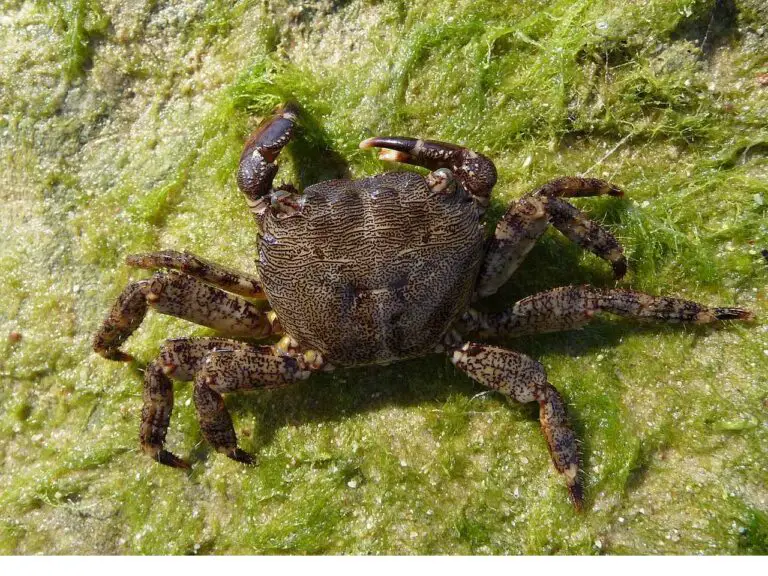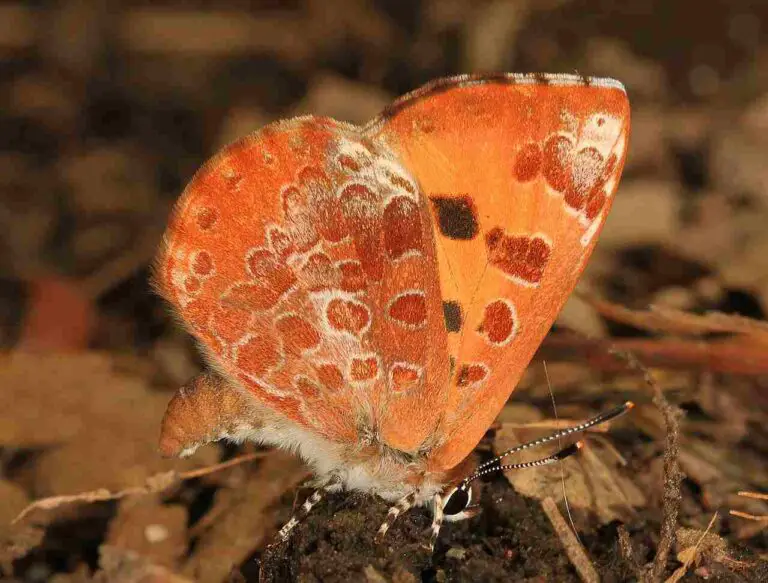23+ Dangerous Animals In Dominican Republic And Their Characteristics
Examples of dangerous animals in the Dominican Republic are the Dominican Racer, a non-venomous snake that can bite if threatened, and the Hispaniolan Boa, a large constrictor. Other dangerous animals include the Cane Toad, with its toxic secretions, and the Black Widow Spider, with its venomous bite. The Portuguese Man o’ War’s tentacles can deliver a painful sting, while the Bullet Ant’s sting is known for its extreme pain. Additionally, the Stonefish is one of the most venomous fish, and the Tiger Shark is known for its aggressive behavior. Each of these creatures can pose a threat if encountered in their natural habitat.
1. Dominican Racer (Alsophis antillensis)
The Dominican Racer (Alsophis antillensis) is a slender, fast-moving snake found primarily in the Dominican Republic and other parts of the Caribbean. While its name suggests speed, this snake is generally non-venomous to humans and primarily preys on small reptiles and amphibians. Despite its intimidating appearance and rapid movements, the Dominican Racer poses little threat to people, making it more of a curiosity than a danger in its natural habitat. Though not venomous, its bite can still cause mild irritation or allergic reactions, so caution is advised when encountering it in the wild.
2. Hispaniolan Boa (Chilabothrus striatus)
The Hispaniolan Boa (Chilabothrus striatus) is a large constrictor snake native to the Dominican Republic and Haiti on the island of Hispaniola. Known for its impressive size and strength, it can grow over 6 feet in length. Despite its intimidating size, the Hispaniolan Boa primarily preys on rodents and birds and is not venomous, posing little threat to humans. However, it can deliver a painful bite if threatened or handled inappropriately. Its presence is critical for controlling small mammal populations, but human encroachment and habitat loss are threats to this species.
3. Cane Toad (Rhinella marina)

The Cane Toad (Rhinella marina) is an invasive species in the Dominican Republic, originally from Central and South America. This large toad is known for its toxic secretions, which can be harmful to both humans and animals. The poison, found in glands on its skin, can cause irritation and more severe symptoms if ingested or if it comes into contact with mucous membranes. Cane Toads pose a threat to native wildlife, as their toxins can be lethal to predators. They also breed prolifically, contributing to their invasive impact on local ecosystems.
4. Black Widow Spider (Latrodectus mactans)
The Black Widow Spider (Latrodectus mactans) is one of the most notorious venomous spiders in the world, and it can be found in the Dominican Republic. Recognized by its shiny black body and distinctive red hourglass marking on the abdomen, this spider can deliver a potent neurotoxin through its bite. While Black Widow bites are rarely fatal to humans, they can cause intense pain, muscle cramps, and other neurological symptoms. Despite their dangerous reputation, Black Widows are generally non-aggressive and will bite only when threatened.
5. Brown Recluse Spider (Loxosceles reclusa)
The Brown Recluse Spider (Loxosceles reclusa) is a venomous spider known for its shy nature and distinctive violin-shaped marking on its back. Though not native to the Dominican Republic, it can sometimes be found there. A bite from a Brown Recluse can lead to necrotic lesions, which may require medical attention and can cause significant tissue damage. Despite its potential for harm, the Brown Recluse is generally non-aggressive and prefers to hide in dark, undisturbed areas. It will bite only when it feels threatened, making it important to exercise caution in areas where it may be present.
6. Bullet Ant (Paraponera clavata)
The Bullet Ant (Paraponera clavata) is known for its extremely painful sting, which some describe as feeling like a gunshot—hence its name. While primarily found in Central and South America, this ant can occasionally be encountered in the Dominican Republic. The venom from a Bullet Ant sting can cause intense pain, swelling, and even temporary paralysis in the affected area. Despite its painful sting, the Bullet Ant is not aggressive unless provoked, typically using its powerful mandibles and venom to defend its colony from threats.
7. Scorpion (Centruroides spp.)
Scorpions in the genus Centruroides are commonly found throughout the Caribbean, including the Dominican Republic. These arachnids have a fearsome reputation due to their venomous sting, which they use for both hunting and self-defense. A sting from a Centruroides scorpion can cause pain, swelling, and, in some cases, more severe symptoms such as muscle spasms and respiratory difficulties. Although fatalities are rare, medical attention is recommended for severe reactions. While these scorpions are usually nocturnal and avoid human contact, they can sometimes find their way into homes or other dwellings.
8. Lionfish (Pterois spp.)
Lionfish (Pterois spp.) are an invasive species in the Caribbean, including the waters surrounding the Dominican Republic. These strikingly beautiful fish have distinctive red and white stripes and long, flowing fins. Despite their attractive appearance, lionfish possess venomous spines that can cause intense pain, swelling, and even systemic symptoms when touched or stepped on. The lionfish’s invasion poses a significant threat to local marine ecosystems, as they prey on a wide variety of smaller fish, disrupting the balance of coral reefs and other habitats. Caution is advised when diving or snorkeling in areas where lionfish are known to be present.
9. Barracuda (Sphyraena barracuda)
The Barracuda (Sphyraena barracuda) is a predatory fish commonly found in the tropical and subtropical waters surrounding the Dominican Republic. Known for its aggressive behavior and sharp teeth, the barracuda can pose a threat to swimmers and divers, especially if they are wearing shiny objects that might attract the fish’s attention. While barracudas generally avoid humans, they are opportunistic predators and can attack if provoked or if they mistake something for food. Despite their fearsome reputation, serious barracuda attacks on humans are rare, and they play an important role in maintaining the balance of marine ecosystems.
10. Moray Eel (Muraenidae family)
Moray eels in the Muraenidae family are elongated, snake-like fish found in the warm coastal waters of the Dominican Republic. These eels are known for their sharp teeth and strong jaws, which they use to catch prey. Although they are not venomous, a bite from a moray eel can cause deep lacerations and infection due to the bacteria in their mouths. Moray eels are generally shy and will avoid human contact, but they can become aggressive if cornered or provoked. When diving or snorkeling, it’s important to respect their space and avoid reaching into crevices where they might be hiding.
11. Portuguese Man o’ War (Physalia physalis)
The Portuguese Man o’ War (Physalia physalis) is not a true jellyfish but a colonial organism consisting of specialized polyps, known for its vibrant blue or purple color and long, trailing tentacles. Found in the Atlantic Ocean and sometimes washing ashore in the Dominican Republic, the Portuguese Man o’ War has venomous tentacles that can cause painful stings, often leading to intense pain, redness, swelling, and, in some cases, more severe reactions such as difficulty breathing or heart complications. If stung, immediate first aid is essential, including washing the affected area with saltwater (not freshwater) and seeking medical attention if symptoms worsen.
12. Fire Coral (Millepora spp.)
Fire Coral (Millepora spp.) is a type of hydrozoan that looks similar to coral but is capable of delivering painful stings. Common in the Caribbean, including the waters around the Dominican Republic, Fire Coral can cause intense burning sensations, redness, and itching if touched. Although not generally life-threatening, stings from Fire Coral can be uncomfortable and lead to blistering or other skin reactions. Divers and snorkelers should be careful not to touch or brush against Fire Coral, as its appearance can be deceiving, resembling harmless coral.
13. Caribbean Reef Shark (Carcharhinus perezi)
The Caribbean Reef Shark (Carcharhinus perezi) is a common shark species found in the Caribbean Sea, including the waters surrounding the Dominican Republic. This shark is typically shy and prefers to keep its distance from humans, but it can become curious or aggressive if it feels threatened or if there’s food nearby. While not generally a danger to humans, the Caribbean Reef Shark’s size and strength warrant caution when swimming or diving in its habitat. It’s a vital part of the marine ecosystem, helping to regulate fish populations and maintain the health of coral reefs.
14. Nurse Shark (Ginglymostoma cirratum)
The Nurse Shark (Ginglymostoma cirratum) is a docile shark species often found resting on the sea floor in shallow coastal waters of the Dominican Republic. Despite its generally calm demeanor, the Nurse Shark can deliver a painful bite if disturbed or provoked. Though its bite isn’t venomous, it can cause significant injury due to the shark’s powerful jaws and serrated teeth. Nurse Sharks typically feed on crustaceans and small fish, playing a vital role in the ecosystem. Divers and snorkelers should respect their space and avoid approaching them too closely.
15. Sicklefin Lemon Shark (Negaprion acutidens)
The Sicklefin Lemon Shark (Negaprion acutidens) is a large, robust shark found in tropical and subtropical waters, including the Dominican Republic. It has a distinctive sickle-shaped dorsal fin and a yellowish-brown coloration. Known for its inquisitive nature, this shark can be aggressive if provoked or if there’s food in the area. Although attacks on humans are rare, the Sicklefin Lemon Shark can pose a threat due to its size and strength. It plays an important role in maintaining the balance of marine ecosystems, and divers should be cautious around them, respecting their territory.
16. Electric Ray (Narcinidae family)
Electric Rays in the Narcinidae family are known for their ability to generate electricity to stun prey and deter predators. Found in coastal waters of the Dominican Republic, these rays can deliver a powerful electric shock, causing pain, muscle spasms, and, in some cases, temporary paralysis. Though they are not aggressive, Electric Rays can be dangerous if stepped on or disturbed, making it important to watch your step in sandy or shallow areas where they might be buried. Divers and snorkelers should maintain a safe distance to avoid unintended shocks.
17. Stonefish (Synanceia spp.)
The Stonefish (Synanceia spp.) is one of the most venomous fish in the world, and it can be found in tropical waters, including the Dominican Republic. With its exceptional camouflage, it resembles a rock or piece of coral, making it easy to overlook. If stepped on or touched, the Stonefish’s venomous spines can deliver a potent toxin that causes intense pain, swelling, and potentially life-threatening reactions. Prompt medical treatment is crucial to reduce the risk of severe complications. Divers and snorkelers should exercise caution when exploring coral reefs and sandy areas to avoid accidental encounters with Stonefish.
18. Blue-Ringed Octopus (Hapalochlaena spp.)
The Blue-Ringed Octopus (Hapalochlaena spp.) is renowned for its vibrant blue rings that appear when it’s agitated or threatened. This small but highly venomous octopus is not native to the Dominican Republic, typically found in the Pacific and Indian Oceans. However, its venom contains tetrodotoxin, a potent neurotoxin that can cause paralysis and respiratory failure, leading to death if untreated. The Blue-Ringed Octopus is generally non-aggressive, only biting if it feels threatened. If encountered, it’s crucial to maintain a safe distance and avoid handling this potentially deadly creature.
19. Tiger Shark (Galeocerdo cuvier)
The Tiger Shark (Galeocerdo cuvier) is a large and aggressive shark species found in tropical and subtropical waters, including the areas around the Dominican Republic. Recognized for its dark stripes along its body, this shark has a reputation for being a formidable predator, capable of attacking large prey. Tiger Sharks are known for their curiosity and willingness to approach humans, which can pose a danger to swimmers and divers. Although attacks are rare, they are responsible for some fatal shark incidents. Caution is advised when venturing into waters where Tiger Sharks are known to be present.
20. Manta Ray (Mobula birostris)
The Manta Ray (Mobula birostris) is a majestic, large ray found in tropical and subtropical waters, including those near the Dominican Republic. Known for its impressive size and graceful swimming, the Manta Ray is generally docile and poses little threat to humans. However, due to its large wingspan and potential to accidentally knock swimmers or divers, caution is advised when encountering these gentle giants. Manta Rays primarily feed on plankton and play a significant role in maintaining marine ecosystems. When interacting with them, it’s important to respect their space and avoid touching or harassing them.
21. Yellow-Bellied Sea Snake (Pelamis platura)
The Yellow-Bellied Sea Snake (Pelamis platura) is a highly venomous snake found in tropical oceans, including the Caribbean Sea. With its striking yellow and black coloration, this snake is fully aquatic and rarely comes ashore, but it can be encountered by divers and boaters. Although its venom is extremely potent, bites are rare since this snake generally avoids human contact. However, if bitten, immediate medical attention is crucial, as the venom can cause muscle paralysis and respiratory failure. It’s best to maintain a safe distance when encountering this sea snake in its natural habitat.
22. Stingray (Dasyatidae family)
Stingrays in the Dasyatidae family are common in tropical and subtropical waters, including those surrounding the Dominican Republic. These flattened fish have a venomous tail spine used for defense, and a sting can cause severe pain, swelling, and potential complications such as infection or muscle spasms. While not aggressive, stingrays may sting if stepped on or threatened, so swimmers and snorkelers should shuffle their feet in shallow waters to avoid unexpected encounters. If stung, immediate first aid and medical attention are necessary to treat the wound and manage pain.
23. Sea Urchin (Diadematidae family)
Sea Urchins in the Diadematidae family are spiny echinoderms commonly found in coral reefs and rocky shorelines, including those in the Dominican Republic. These creatures have long, sharp spines that can cause painful puncture wounds if touched or stepped on. Some sea urchins also contain venom, which can lead to swelling, redness, and even systemic reactions. Divers and snorkelers should be careful not to touch sea urchins, as the spines can break off in the skin, leading to further complications. If injured by a sea urchin, prompt removal of spines and medical attention may be required.
24. Bullet Jellyfish (Stomolophus meleagris)
The Bullet Jellyfish (Stomolophus meleagris) is a type of jellyfish known for its robust, bell-shaped body and relatively short tentacles. Found in tropical waters, including those near the Dominican Republic, this jellyfish can deliver a painful sting that can cause redness, swelling, and mild to moderate discomfort. Although the sting of the Bullet Jellyfish is less severe than other jellyfish species, it can still be unpleasant and require basic first aid. Swimmers and beachgoers should be cautious when swimming in areas where jellyfish are present, and those stung should rinse the area with saltwater and seek medical attention if symptoms persist.
| Dangerous Animal | Description |
| Dominican Racer |
Non-venomous snake that can bite if threatened; typically feeds on small reptiles and amphibians.
|
| Hispaniolan Boa |
Large constrictor snake; not venomous but can bite if disturbed.
|
| Cane Toad |
Large toad with toxic secretions that can cause irritation; invasive species.
|
| Black Widow Spider |
Venomous spider with a distinct red hourglass marking; bites can cause severe pain and cramping.
|
| Brown Recluse Spider |
Venomous spider with a violin-shaped marking; bites can cause necrotic lesions.
|
| Bullet Ant |
Ant with an extremely painful sting; non-aggressive unless provoked.
|
| Scorpion |
Venomous arachnid; sting can cause pain and severe symptoms.
|
| Lionfish |
Invasive fish with venomous spines; painful sting if touched.
|
| Barracuda |
Aggressive fish with sharp teeth; generally avoids humans but can be provoked.
|
| Moray Eel |
Elongated fish with sharp teeth; can bite if threatened.
|
| Portuguese Man o’ War |
Colonial organism with venomous tentacles; painful sting.
|
| Fire Coral |
Hydrozoan that resembles coral; delivers painful stings if touched.
|
| Caribbean Reef Shark |
Shark that can be curious or aggressive; rarely a danger to humans.
|
| Nurse Shark |
Docile shark; can bite if provoked or disturbed.
|
| Sicklefin Lemon Shark |
Large shark with a distinctive dorsal fin; can be aggressive if provoked.
|
| Electric Ray |
Ray that generates electric shocks; can cause muscle spasms.
|
| Stonefish |
Venomous fish with excellent camouflage; can deliver potent stings if stepped on.
|
| Blue-Ringed Octopus |
Highly venomous octopus; contains a potent neurotoxin.
|
| Tiger Shark |
Aggressive shark; known to attack large prey and sometimes humans.
|
| Manta Ray |
Large, gentle ray; generally harmless but can accidentally knock over swimmers or divers.
|
| Yellow-Bellied Sea Snake |
Highly venomous sea snake; generally avoids human contact.
|
| Stingray |
Ray with a venomous tail spine; can sting if stepped on or threatened.
|
| Sea Urchin |
Spiny echinoderm; can cause painful puncture wounds and may contain venom.
|
| Bullet Jellyfish |
Jellyfish with a bell-shaped body; sting can cause mild to moderate discomfort.
|













